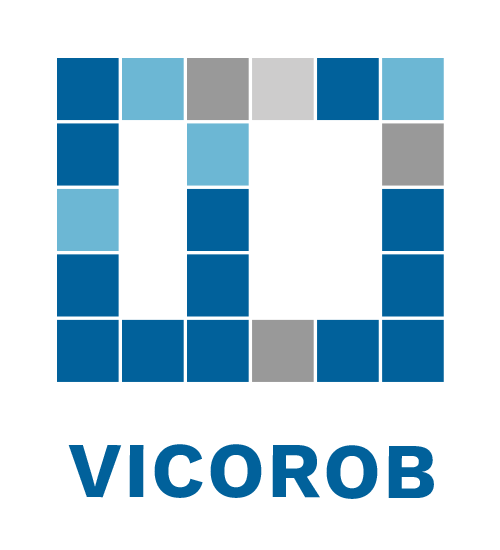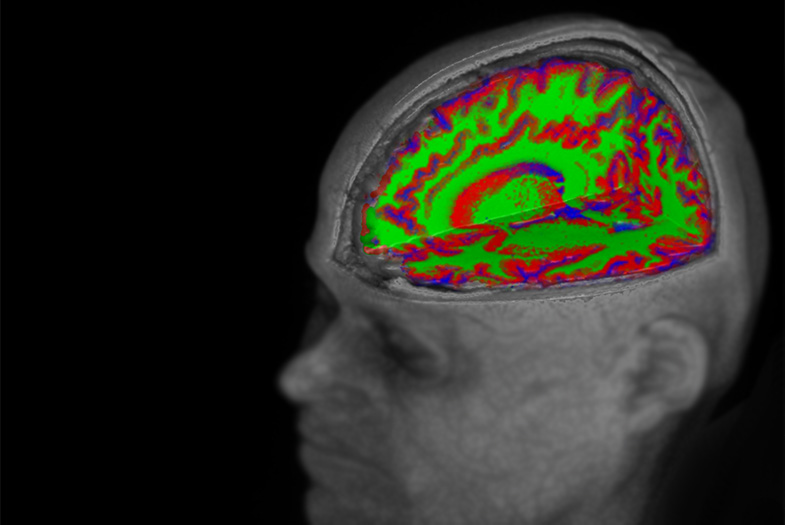Automated brain tissue segmentation of magnetic resonance images in multiple sclerosis
Doctoral thesis “Automated brain tissue segmentation of magnetic resonance images in multiple sclerosis”
By Sergi Valverde
Supervised by Dr. Arnau Oliver, Dr. Xavier Lladó
Abstract
Multiple Sclerosis (MS) is the most common chronic immune-mediated disabling neurological disease affecting the central nervous system, in which the insulating covers of the nerve cells in the spinal chord and brain are damaged. MS is characterized by the presence of lesions in the brain, predominantly in the white matter (WM) tissue of the brain. Due to the sensitivity of structural Magnetic Resonance Imaging (MRI) disseminating WM lesions in time and space, it has become an essential tool in the diagnosis and evaluation of MS. Furthermore, MRI measurements of atrophied tissue in the brain have shown to correlate with the disability status, demonstrating that tissue loss is an important component of the disease’s progression.
This correlation between the amount of atrophied tissue in the brain and MS disability status has increased the necessity of developing robust, automated brain tissue segmentation methods capable of measuring the brain’s tissue volume accurately. However, automated segmentation of brain tissue is still a challenging problem due to the complexity of the images, lack of contrast between tissues, noise, intensity inhomogeneities and the absence of anatomy models that fully capture the possible deformations in each structure. Moreover, it has been shown that WM lesions reduce the accuracy of automated tissue segmentation methods, which highlights the necessity of handling these lesions before tissue segmentation, a process known as lesion filling. However, lesion filling requires manually annotating lesions before tissue segmentation, which is time-consuming, prone to variability among expert radiologists, or not always readily available. This fact along with the need of analyzing focal MS lesions quantitatively in individual and temporal studies has led to the development of a large number of automated lesion segmentation methods of
MS lesions.
The main goal of this thesis is to develop a novel, fully automated brain tissue segmentation method capable of computing accurate measurements of tissue volume from images of MS patients with lesions.In order to fulfill this goal, we have focused on each of the concatenated processes necessary to develop a fully automated tissue segmentation method. Firstly, we have analyzed and evaluated the state-of-the-art of tissue segmentation methods on data from healthy subjects, where we have performed a quantitative review of the different tissue segmentation techniques proposed, with the aim of understanding their advantages and drawbacks. Our experimental results have shown that methods that incorporate morphological prior information and/or spatial constraints are more robust to changes in acquisition sequences and intensity inhomogeneities, when compared with simpler strategy intensity based methods.
In the second stage, we have studied and evaluated the effect of WM lesions on tissue segmentation of MS patient images. In this regard, we have performed several experiments using multi-center 1.5T MS data from different scanners in order to analyze the effects of lesion signal intensities and lesion size on the performance of several tissue segmentation methods not explicitly designed to handle with WM lesions. In all these methods, the results obtained have indicated that the inclusion of WM lesions on tissue segmentation not only biased the total tissue volume measurements
by the addition of miss-classified lesion voxels, but also had a direct effect on the differences observed in normal-appearing tissue. This effect has shown to be less relevant in those methods that incorporate prior information and/or spatial context.
In the third stage, we have focused on lesion filling, reviewing and analyzing the accuracy of the different lesion filling techniques proposed in the literature. Motivated by these results, we have proposed a new lesion filling technique with the aim of overcoming the limitations of previously proposed methods. When compared with these methods, our experimental results have shown that the proposed lesion filling method is effective with different databases and is independent of the tissue segmentation method used afterwards.
Finally, we have focused on a comprehensive analysis of the effects of automated lesion segmentation and filling in tissue segmentation. We have evaluated the accuracy of two pipelines that incorporated automated lesion segmentation, lesion filling and tissue segmentation on MS data, with the aim of understanding the extent of the effect of remaining WM lesions on the differences in tissue segmentation. Our findings have shown that up to certain lesion load, pipelines that incorporated automated lesion segmentation and filling are capable of significantly reducing the
impact of WM lesions on tissue segmentation, showing a similar performance to pipelines where expert lesion annotations were used.
All these stages have served as the basis in the development of a novel, multichannel method designed to segment brain tissues in MRI images of MS patients. The proposed tissue segmentation method has been designed and implemented using a combination of intensity along with anatomical and morphological prior maps to guide the tissue segmentation. WM outliers have been estimated and filled before segmentation using a multi-channel post-processing rule-based algorithm with spatial context, and prior anatomical and morphological atlases. The proposed method
has been quantitatively and qualitatively evaluated using different databases of images containing WM lesions, yielding competitive and consistent results in both general and MS specific databases. The percentages of errors obtained in the different experiments carried out show that the proposed algorithm effectively improves automated brain tissue segmentation in images containing lesions.
This PhD thesis is part of several project frameworks carried out by our research group in collaboration with different hospital centers. As part of the goals of these research projects, software implementations of all the proposed methods in this thesis have been released for public use in the research community. The proposed lesion filling method is currently being used by the collaborating hospitals. We believe that the proposed, fully automated tissue segmentation method will also be beneficial in clinical settings.


No Comment